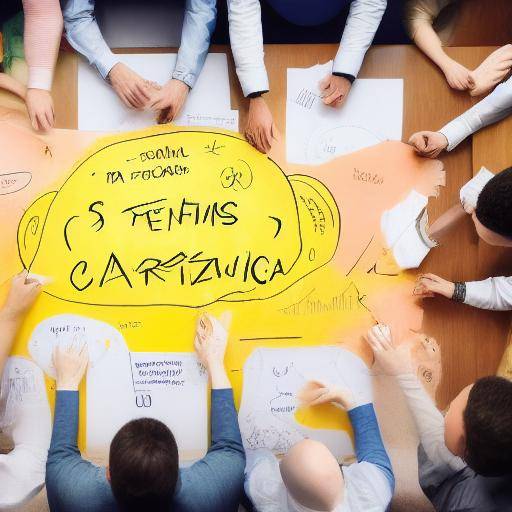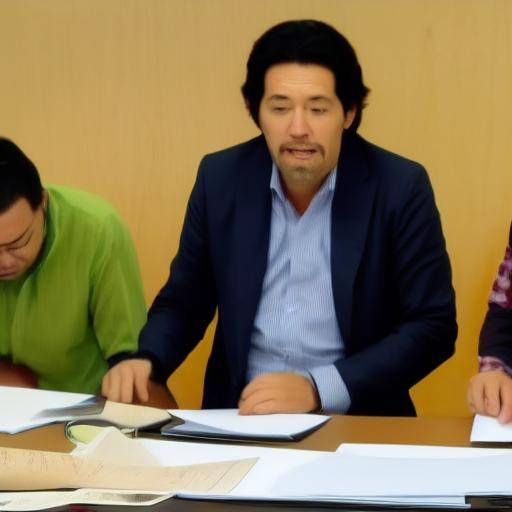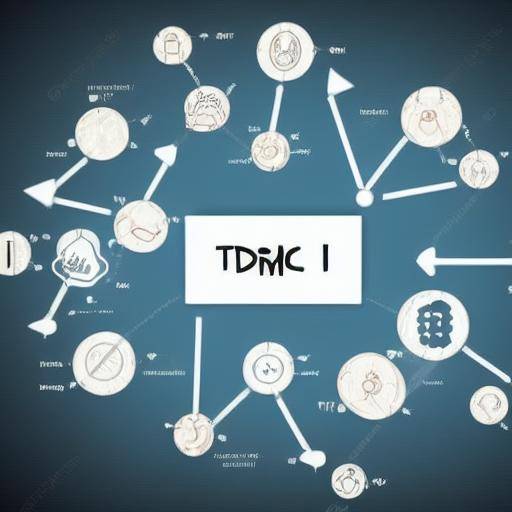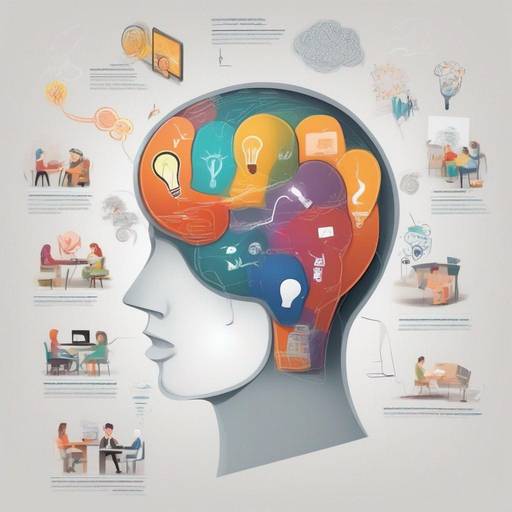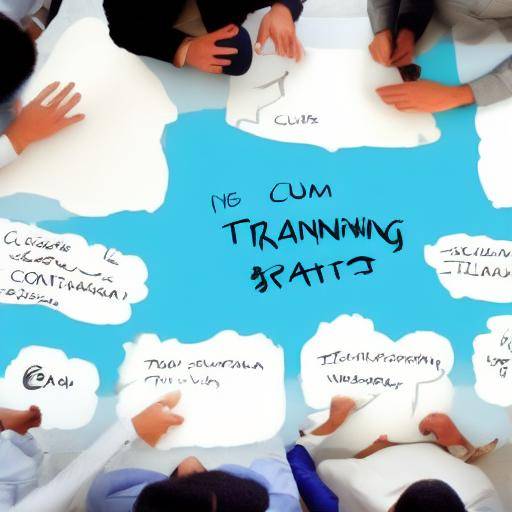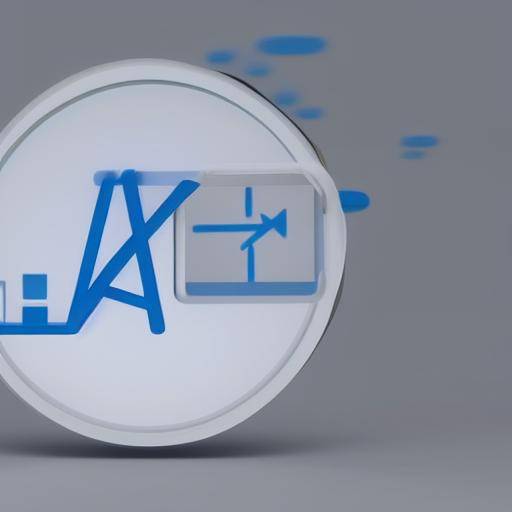
The brainstorming technique, also known as brainstorming storm or brainstorming, is a powerful tool to promote creativity and flexible planning in various scenarios. From its origin in the 1940s to its current application, brainstorming has proven to be an effective methodology for generating ideas, solving problems and facilitating decision-making. In this article, we will thoroughly explore how to use this technique to flexibly plan, foster creativity and optimize its applicability in different contexts.
Introduction
The brainstorming is a creative thinking technique that allows individuals and teams to generate ideas in a collaborative and non-restrictive way. In fostering the participation of all members, brainstorming stimulates creativity, promotes diversity of perspectives and promotes the generation of innovative solutions. On the other hand, flexible planning is a strategy that focuses on adapting to the changes and challenges that may arise, allowing to adjust plans according to circumstances.
In this article, we will know how to take advantage of the brainstorming to carry out flexible planning, promoting innovation and adaptability in the process. We will examine its historical evolution, its current benefits, challenges and trends, as well as its practical application in different situations. In addition, we will compare the use of brainstorming with flexible planning, exploring how creativity becomes an invaluable resource to face business and personal challenges.
History and Background
The concept of brainstorming was developed by Alex Faickney Osborn in the 1940s. Osborn, a publicist and writer, introduced this technique as an approach to stimulating the generation of creative ideas in groups. In 1953, in his book "Applied Imagination", Osborn formalized the principles of brainstorming, promoting non-critical, generating as many ideas as possible and combining and improving the proposals presented.
During the following decades, brainstorming was popularized as a key tool in the business, educational and creative sphere. As globalization and technology transformed labour environments, brainstorming adapted to meet the challenges of accelerated change and growing complexity in decision-making.
Analysis in Deep
The brainstorming provides many benefits, including the creation of an inclusive environment where each participant has the opportunity to express their ideas without fear of criticism. In addition, it promotes collaboration and lateral thinking, resulting in innovative solutions and unconventional approaches to problems. However, the challenge is to maintain the quality of ideas during brainstorming sessions, as well as to ensure the effective implementation of the proposals generated.
Flexible planning has now become an indispensable requirement in a world characterized by uncertainty and volatility. The ability to quickly adapt to unexpected changes and reorient efforts to adjusted goals is critical for organizational success. The brainstorming, by fostering the diversity of ideas and exploring alternative approaches, is perfectly aligned with the dynamics of flexible planning.
Full review
The effective use of brainstorming for flexible planning requires a deep understanding of its application in different contexts. In business, brainstorming can be used to develop agile strategies that adapt to market changes and consumer demands. On the other hand, in educational settings, brainstorming can motivate the active participation of students and promote problem solving creatively.
A thorough analysis of best practices in the use of brainstorming reveals the importance of establishing clear rules for sessions, fostering the diversity of ideas and assigning responsibilities for the implementation of the generated proposals. In addition, acceptance of uncertainty as a natural element in flexible planning is essential to ensure that strategies derived from brainstorming are adaptable to changing scenarios.
Comparative analysis
Compareing brainstorming techniques with flexible planning allows us to identify significant synergies between both. While brainstorming focuses on generating innovative ideas and solutions, flexible planning provides the necessary framework to adapt and apply these proposals in a changing environment. Creativity plays a crucial role in this process, as it promotes the generation of original ideas and mental flexibility to address unforeseen challenges.
Practical Tips and Accessible Tips
To make the most of the brainstorming technique in the context of flexible planning, it is essential to establish an enabling environment for creativity. Some practical tips include the clear definition of objectives for brainstorming sessions, the inclusion of people with different perspectives and the application of lateral thinking techniques to break preset patterns. It is also crucial to adopt an open and responsive mindset during the process, assessing all ideas, regardless of their initial feasibility.
- It clearly defines the objectives and themes to be addressed at brainstorming sessions.
- It promotes the equal participation of all team members, promoting the diversity of ideas.
- Use the lateral thinking technique to stimulate the generation of unconventional ideas.
- It sets clear rules to ensure an atmosphere of respect and openness during brainstorming.
- It prioritizes the evaluation of ideas objectively, recognizing the potential of non-conventional proposals.
- It assists responsibilities and deadlines for the implementation and follow-up of ideas generated during brainstorming.
Industry Perspectives and Expert Reviews
The business and academic community values the potential of brainstorming to boost creativity and innovation in flexible planning. Experts on strategic change management and leadership agree that the ability to adapt to dynamic environments and to evolve according to market demands is essential today. The combination of brainstorming with flexible planning is considered an effective strategy to address the challenges posed by uncertainty and business competition.
Case Studies and Real Life Applications
To illustrate how brainstorming can enhance flexible planning, consider the case of a technology company facing disruptive changes in its sector. Through brainstorming sessions, the team identifies opportunities to diversify its products and services, adapting to new market demands. This creative exploration allows the company to reorient its strategic planning in agile and effective way, capitalizing on the innovation generated from the brainstorming.
In the educational field, the use of brainstorming combined with flexible planning can raise the level of participation and commitment of students. By fostering a collaborative and stimulating environment, teachers can motivate their students to explore innovative solutions and adapt their learning approaches to their individual needs.
Future Trends and Predictions
As organizations seek to adapt to changing and competitive environments, brainstorming integration with flexible planning is expected to become a common practice in strategic decision-making. The ability to generate and adapt ideas agilely will be a key differentiator for innovation and sustainable growth in a dynamic and challenging world. Emerging technologies, such as artificial intelligence and predictive analysis, will also influence the evolution of brainstorming, enhancing its application in complex and diversified scenarios.
Conclusions
Effective use of brainstorming for flexible planning can result in significant advantages in both business and educational environments. By fostering creativity and collaboration, this technique promotes the generation of innovative ideas and adaptability to changing circumstances. The synergy between brainstorming and flexible planning provides a solid framework to address the challenges of the current environment with creativity and agility.
FAQs
1. What is the difference between brainstorming and flexible planning?
The brainstorming focuses on generating creative ideas and innovative solutions, while flexible planning focuses on the ability to adapt and adjust plans to unexpected changes or fluctuations in the environment.
2. How can I encourage creativity during brainstorming sessions?
To stimulate creativity during brainstorming, it is important to create an atmosphere of openness and respect where all ideas are valued, promote diversity of perspectives, and use side thinking techniques to explore non-conventional approaches.
3. What challenges are presented when implementing flexible planning in business environments?
In implementing flexible planning, challenges can include resistance to change, uncertainty in decision-making and the need to quickly adjust plans in response to unforeseen changes.
4. What are the best practices to integrate brainstorming with flexible planning?
By integrating brainstorming with flexible planning, it is advisable to set clear objectives for brainstorming sessions, foster collaboration and diversity of ideas, and assign responsibilities for the implementation and follow-up of the generated proposals.
5. What is the role of creativity in flexible planning?
Creativity plays a crucial role in flexible planning by enabling the generation of innovative ideas and mental flexibility to adapt to changing situations, resulting in agile and creative strategies to address challenges.
6. How can I apply brainstorming and flexible planning in my working or educational environment?
In working or educational environments, you can apply brainstorming and flexible planning by organizing brainstorming sessions to address specific challenges, fostering active participation and diversity of ideas, and adapting plans according to the needs and changes of the environment.
Conclusion
In conclusion, the strategic use of brainstorming to plan flexibly represents a powerful combination that promotes creativity, innovation and adaptability. By adopting effective brainstorming practices and understanding the importance of flexible planning, individuals and organizations can face current challenges with agility and creativity. This synergy between brainstorming and flexible planning offers a dynamic and effective approach to generating innovative solutions to a changing and competitive environment.

